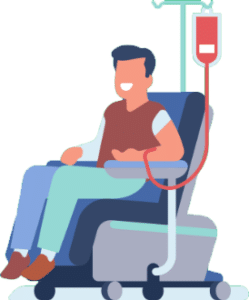
Treating hard-to-treat depression can be a complex process, and even experienced clinicians can make mistakes along the way. Common errors include:
1. Overlooking Comprehensive Diagnostic Assessments
- Focusing solely on depressive symptoms without evaluating underlying medical, neurological, or psychiatric conditions that might be contributing to the depression can lead to suboptimal treatment outcomes. Comprehensive assessments are crucial for tailoring effective interventions.
2. Delaying or Avoiding Advanced Interventions
- Waiting too long to consider advanced treatments like ketamine therapy, TMS, or VNS can prolong patient suffering. Early identification of candidates for these therapies and initiating them proactively can improve outcomes. Psychiatrists can continue to work on medication options that are more cost effective over time but limit the suffering of clients during the trial periods. Acute symptoms like suicidal thoughts could likely benefit from the rapid acting characteristics of TMS, ketamine, Stellate ganglion blocks, or ECT.
3. Insufficient Patient Education
- Not thoroughly discussing the potential side effects, realistic expectations, or the likelihood of treatment failure can lead to frustration and mistrust. Educating patients about what to expect and ensuring they understand their options fosters better engagement and adherence.
4. Neglecting Augmentation Strategies
- Treating depression with a single modality (e.g., medication alone) without considering augmentation strategies like combining psychotherapy, ketamine, or TMS may limit treatment effectiveness. Exploring multi-modal approaches, especially for partial responders, is critical.
5. Inadequate Monitoring and Follow-Up
- Failure to consistently monitor progress or adjust treatments based on patient response can result in stagnant outcomes. Regular follow-ups and flexibility in treatment plans ensure that care evolves to meet patient needs.
6. Underestimating the Role of Collaboration
- Working in isolation without collaborating with other specialists, such as anesthesiologists for SGB or surgeons for VNS, can limit access to innovative treatments. Strong partnerships enhance care delivery and expand available options for patients.
7. Overlooking Lifestyle and Psychosocial Factors
- Ignoring the impact of lifestyle, sleep, diet, and social support systems on depression can lead to incomplete care. Addressing these factors can enhance the effectiveness of primary treatments.
8. Burnout in Providers
- Treating patients with hard-to-treat conditions can be emotionally taxing. Without addressing clinician burnout, care may become less patient-centered, affecting outcomes.
Addressing these challenges requires a combination of persistence, innovation, collaboration, and a patient-centered approach. By avoiding these pitfalls, clinicians can better support patients in their journey toward recovery.








